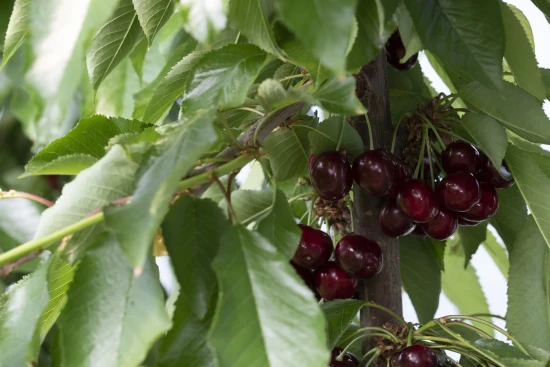The annual cherry production in Kashmir ranges between 12,000 and 14,000 tons, but this year there has been a 30-50% decrease. Affected by erratic weather, cherry growers in the midst of harvesting estimate a 30-50% decline in yield compared to last year.
Last year, the Valley recorded an exceptional stone fruit production, which brought good dividends to the growers, especially in northern Kashmir. The cherry harvesting season begins in mid-May and lasts until the second week of July. According to estimates by the J&K horticulture department, cherries are grown on about 2,800 hectares, with an annual turnover of about 130-150 crore (€16 million approx.).
The cherries have already arrived in the Kashmir fruit mandis, especially in Sopore and Srinagar, from where they are shipped to various parts of the country. "Yes, cherries are arriving daily at the mandis, and compared to last year, production is lower," said Abdul Lateef, a fruit grower from Pattan.
"Since this is the first harvest of the season, everyone is excited about its yield and production. Fortunately, I had about 600 boxes and earned between 80 to 180 euros per one-kilogram box."
Although cherries are grown all over the Valley, the major production comes from central and northern Kashmir. The annual production of this fruit is about 12,000-14,000 tons, depending on the climatic conditions of winter and spring.
"I expected about 1,000 boxes of cherries, but I barely managed to harvest 300. Last year my production was higher than the year before. Last year my production exceeded a thousand boxes. Cherry is a very delicate crop, so weather always plays a role in its production," said Waheed Ahmad, a fruit trader from Baramulla.
Officials from the horticulture department said that production reached about 11,289 and 11,789 metric tons in 2017 and 2018 respectively. According to official estimates, cherry production in 2019 and 2020 will also be around 12,000 tons.
Even last year, production exceeded 12,000 tons. "We receive boxes of cherries every day, but the quantity is much lower than last year. The lower quantity has stabilized the prices," said Zubair Ahmad Bhat, an employee of the Srinagar Fruit Mandi, stating that most of the cherries are shipped directly to Delhi, Mumbai, and Punjab by air and by trains.
"Lately, cherries produced in Kashmir are being sold in the local market. Production has decreased by 30-50% and has not yielded much."
Source: Hindustan Times
Image: India Blooms
Cherry Times - All rights reserved










